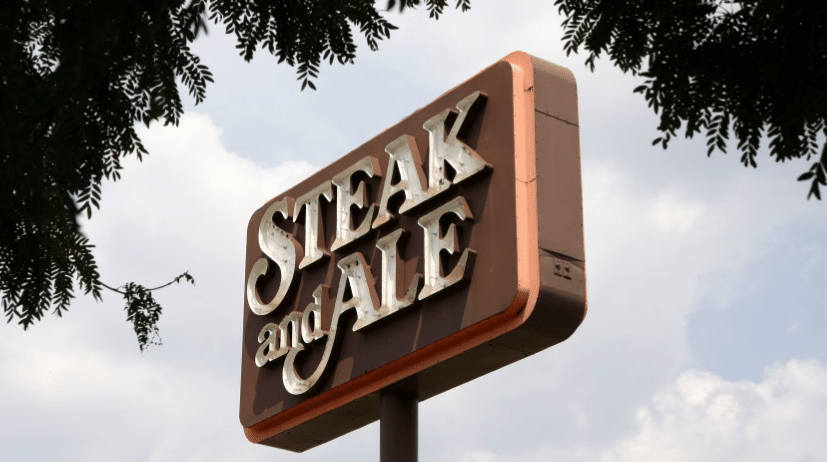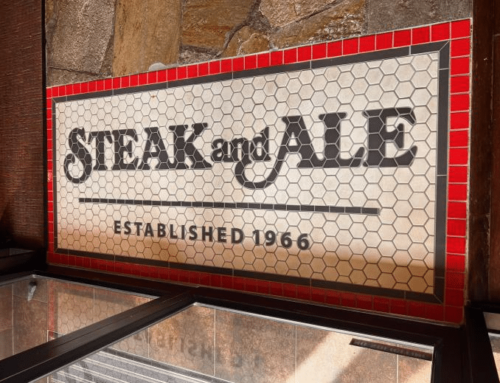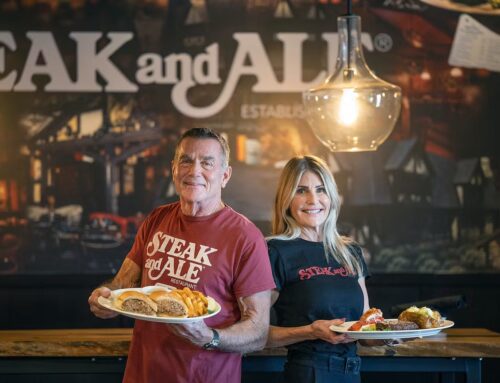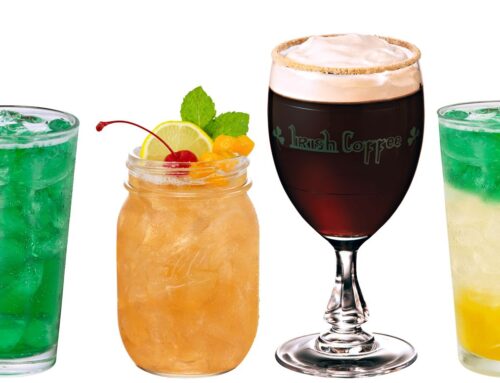
“Everybody loves a comeback story,” says the chairman and CEO — a Dallasite.
Texas restaurateur Paul Mangiamele has been cooking up a comeback for iconic Dallas chain Steak and Ale for nearly a decade. Plans are finally in place to bring the family-friendly prime rib restaurant back to the Dallas-Fort Worth area.
The first reimagined Steak and Ale in Texas will be in Grand Prairie, just off of Interstate 30, Mangiamele says.
It won’t be the first new Steak and Ale in the country; that will be in Burnsville, Minn., a small town near Minneapolis where Mangiamele and his wife, Gwendolyn, have a home.
/cloudfront-us-east-1.images.arcpublishing.com/dmn/5LA7ZDFLNVFGZJEWG2O44JQT6I.jpg)
New Steak and Ale restaurants in Minnesota, Texas and beyond will have a red, white and black color scheme. Chairman and CEO Paul Mangiamele, who purchased the legendary brand in 2015 with the plan to bring it back, describes the restaurants that will eventually open as “old-school” and “comfortable.”(Courtesy of Legendary Restaurant Brands)
The first Dallas-Fort Worth restaurant is expected to open sometime in 2024. It will have stained-glass windows and a salad bar, just like the original restaurant that opened at Oak Lawn and Lemmon avenues in Dallas in 1966.
The restaurants that will follow, which will all be franchises, will seek to memorialize the essence of the famous steak chain created by Dallas restaurateur Norman Brinker. Dallas is home to plenty of chain restaurants, and some Dallasites claim Steak and Ale was among the best.
“Everybody loves a comeback story,” Paul Mangiamele says.
/cloudfront-us-east-1.images.arcpublishing.com/dmn/7CFYWBXWGJHVVC37JKTTG3CW2U.jpg)
The Kensington Club was a popular entree at Steak and Ale. That item will be back on menus when Steak & Ale makes its return in 2023 and 2024, says chairman and CEO Paul Mangiamele. (Courtesy of Legendary Restaurant Brands)
Mangiamele has ambitions to grow Steak and Ale globally and in tandem with Bennigan’s. Both restaurants closed abruptly in 2008 following a “spectacular collapse” that sent them to Chapter 7 bankruptcy liquidation seven years prior, The Dallas Morning News reported. Mangiamele and his wife bought both companies in 2015.
He’s already started a takeout business for Bennigan’s called Bennigan’s on the Fly, which is now delivering from Richardson and Grapevine. Next comes a careful but steady set of Steak and Ales. He wouldn’t share the address for the coming-soon Grand Prairie restaurant, saying he wants to “hold it in suspense” until the ground-breaking. He’ll build a Bennigan’s next door.
Decades ago, the Mangiamele family visited Steak and Ale after church on Sundays in Dallas — long before they had any interest in buying the company.
“The salad bar was fun. The pewter [beer stein] was fun. I loved the herb-roasted prime rib,” Mangiamele says.
Now as the sole owners of Steak and Ale’s intellectual properties, Mangiamele calls the resurgence of Steak and Ale and Bennigan’s “the passion of my life.”
“I’m standing on the shoulders of Norm [Brinker], who was my friend. I take it very seriously.”
Here is an edited Q-and-A with Mangiamele about his plans for Steak and Ale.
Why is the return of Steak and Ale happening now, more than 55 years after it was created?
“There’s never been a better time. With so many restaurants closing [due to the COVID pandemic], it has created an opportunity for us to get into very strong second-generation spaces,” Mangiamele says.
“I’m calling this ‘new-stalgia.’ It harkens back to a time that people love.”
Tell us which parts of Steak and Ale 2.0 were inspired by the original.
/cloudfront-us-east-1.images.arcpublishing.com/dmn/LA4NHWE63NHN5GH3RVJNWG5DMI.jpg)
A ‘Dallas Morning News’ story from July 16, 1967 — the year after the original Steak and Ale opened — tells the story of Norman Brinker, former U.S. Olympic horseman turned restaurateur.(DMN archives)
“I think what Norman [Brinker] would do — and I’ve been in the business 40 some-odd years myself — is to have some entertainment, some theater. A little fun. That seems to be egregiously missing from the casual dining experience today. Even in fine dining,” Mangiamele says.
The restaurants will be designed in red, white and black, with banquettes in the middle of the room. In Steak and Ale’s first life, it was known for its meandering dining rooms and compartmentalized areas for smoking. Smoking sections won’t be part of the new business plan, but Mangiamele does want to recreate the “warm and homey feel” of yesteryear.
And: “Well, if I don’t bring the salad bar back, I’m going to be tarred and feathered right away,” he says. House-made soups like classic French onion, lobster bisque and beef barley will return.
Hawaiian chicken will be back on the menu, and prime rib will be a signature, like it once was.
He plans to call the herb-crusted prime rib the Norman’s Cut. “I want to pay respect to the individual who was responsible for opening this in Dallas, on Oak Lawn and Lemmon so many years ago. We’ll have special cuts and we’ll have some fun with ribeyes,” Mangiamele says.
Do diners want a Steak and Ale redux?
“I said around 2014, ‘Are we the only ones drinking the Kool-Aid? Does anybody else care if we bring back Steak and Ale?’” the CEO says.
Steak and Ale’s Comeback has 50,000 followers on Facebook. Mangiamele realized he had a perfect test group and called the interest “overwhelming.”
“When I saw that love and devotion — when I saw that pent-up demand,” he says: “In a financial equation, pent-up demand equals revenue.”
How many Steak and Ale franchises might open?
“We’re going to grow as the opportunities present themselves,” Mangiamele says, choosing not to pick a number.
“We’re going to build deliberately. We’re going to build slowly. … You’ve got to have a team of eagles, not turkeys.”
What killed Steak and Ale in 2008, in your view?
“What’s the nicest way to put this?” Mangiamele asks. “The previous ownership didn’t respect the people or the culture. We call it brand drift: drifting away from the original success components.”
Hundreds of restaurant workers in D-FW lost their jobs immediately following the Chapter 7 filing. “Instead of going Chapter 11 and letting everybody reorganize, they just disappeared,” Mangiamele says. “As an operator and somebody who loves this business, I take this as an egregious offense.”
Despite that, he thinks the Steak and Ale brand — which essentially only lives on in our memories, for now — remains strong.
“The guests never gave up on casual dining. Casual dining gave up on the guest,” he says. “When you stop paying attention to the children and you say you’re ‘child-friendly,’ why would you continue to go?”
Did you look into opening a Steak and Ale at Oak Lawn and Lemmon, for old time’s sake?
/cloudfront-us-east-1.images.arcpublishing.com/dmn/KRG5VGA64VABHCM7PSY3PWSL6I.jpg)
Paul Mangiamele hopes to infuse new energy into Steak and Ale and Bennigan’s, two once-iconic chain restaurants that floundered in the late 2000s. (Courtesy of Legendary Restaurant Brands)
Yes, Mangiamele says.
“My wish would be to go right back to Oak Lawn and Lemmon. I live down the street from it, and I’ve looked at it,” he says.
“I’ve already had that kind of [investor] interest — but not enough to put together a package.”
Not yet, anyway.
The first redone Steak and Ale in Texas will be on Interstate 30 in Grand Prairie, says the chairman and CEO. It’s expected to open in 2024.
The first new Bennigan’s in North Texas will be next door.






